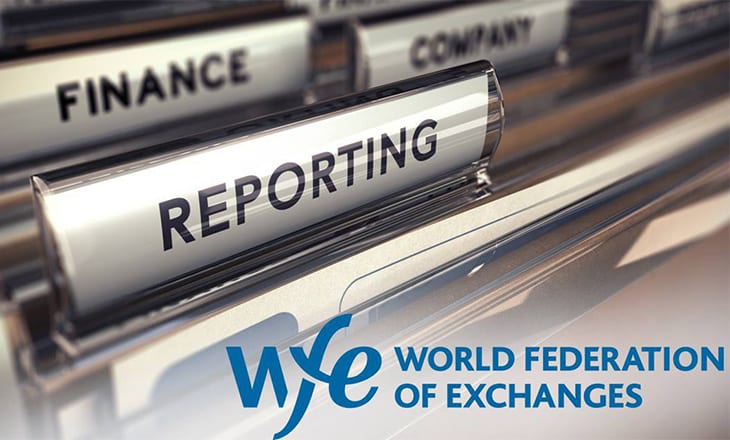The World Federation of Exchanges (WFE), which represents more than 200 market infrastructure providers including exchanges and CCPs, today published a position paper summarising the WFE’s current views on FinTech and the regulatory environment surrounding it.
The purpose of the paper – entitled FinTech in the Market Infrastructure Space – is to support ongoing compliance efforts, to ensure markets are resilient, stable and robust, and able to operate on a fair and level playing field with regards to FinTech.
The paper examines seven key areas, and identifies corresponding principles for markets Authorities to consider when designing rules, standards and guidelines for FinTech in the market infrastructure space:
- Market driven innovation: Innovation should generally be market driven. Nevertheless, it is clear that Authorities have a role to play in ensuring the system remains stable in the face of changing technology, and that some innovation may be prompted by regulatory initiatives (for example RegTech).
- The scope of existing regulations should be broadly sufficient: The WFE believes the scope of existing regulations should generally be sufficient to extend to many or most potential FinTech initiatives. Initiatives should be considered on a case-by-case basis and legislation, rules and practices should only be adapted if strictly required, and be technology neutral.
- Any regulatory approach should encourage innovation whilst ensuring investor protection and system stability: The development of regulatory and/or legal standards should not prevent market and technological innovation. Authorities should remain focused on ensuring investor protection and the safety of markets whilst encouraging an environment that enables financial technology which improves capital markets.
- The implications of outsourcing: It is a well-established supervisory principle that responsibility for outsourced functions remains with the regulated entity. While the technology itself may present unique risks (operational, cyber), this underlying principle remains appropriate, even when regulated entities are outsourcing new FinTech applications and solutions.
- It is important there is regular and open dialogue between regulators and the markets: Authorities should proactively engage with the industry to identify the nature of the FinTech application, understand the technology which underpins it, and work with the market on an appropriate regulatory framework. Regulatory sandboxes and innovation hubs have proven useful and should be extended, where appropriate, to ensure collaboration and exchange of information between industry and regulators.
- It is also important – where possible – to coordinate regulatory thinking in this space at the global level: The WFE believes there should be collaboration at the international regulatory organisation level (e.g. IOSCO) to develop a common approach and understanding to FinTech, to ensure regulatory coherence. FinTech is innately international with global applications and uses, and therefore any regulatory principles and/or guidelines should be developed at that global level.
- There should be consistency in the application of rules to both incumbents and new FinTech entrants: Any regulatory framework should be consistent between non-financial companies that enter this market and traditional regulated entities such as exchanges and CCPs. This is essential for maintaining the integrity, stability and fairness of the financial system.
Nandini Sukumar, CEO, The WFE said:
The WFE is pleased to publish the first position paper from its newly formed FinTech Working Group (FTWG). As our seven principles show, the global nature of FinTech demands a collaborative international approach, that allows innovation to flourish while safeguarding markets.
The principles set out in this paper are also intended as a prompt for further regulatory and industry discussion to ensure rules, standards, guidelines and expectations are designed that appropriately fit the nuances of global markets operating in local jurisdictions,” added Gavin Hill, Head of Regulatory Affairs, The WFE.
Set up in 2017, the WFE’s FTWG comprises senior technology and innovation representatives from nearly 20 exchanges and CCPs globally. The purpose of the FTWG is to enable members to develop comprehensive and coherent industry policy positions to help shape regulatory thinking in this space, while also sharing information and best practice about new developments.
